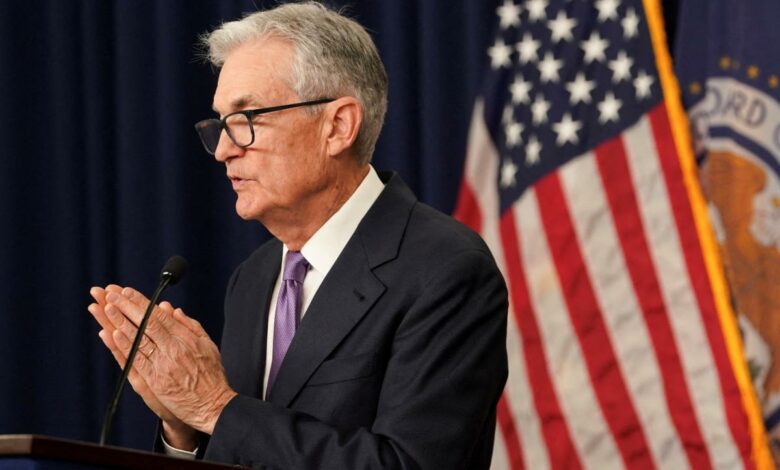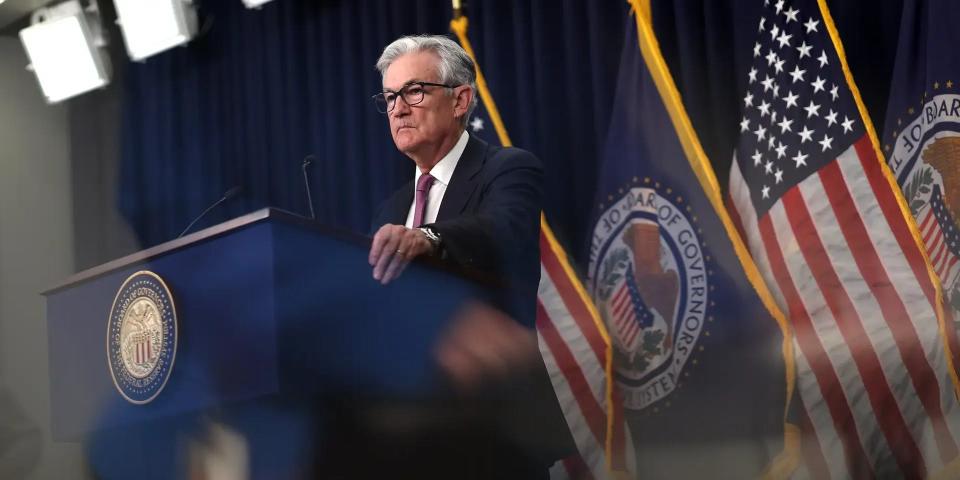Investors are expecting rate cuts. But what happens to markets if they don’t come this year?


-
Rate-cute outlooks have been clouded by hot economic data so far this year.
-
Some market pros have been eyeing the possibility rates stay high in 2024.
-
In that scenario, stocks could still rise, but bonds and real estate would be crushed.
Gambling on rate cuts has been a major theme in 2024, but as a string of hot economic data points has kept the Federal Reserve on its toes, some in markets have begun to wonder: what if the Fed doesn’t cut this year?
“More confidence needed” is the mantra Fed Chair Jerome Powell has been repeating, remaining crystal clear about the central bank’s goal of bringing the inflation level closer to 2% target.
A spike of 3.3% in fourth quarter GDP, an influx of 353,000 new jobs in January, and inflation at 3.1% are all data points that are complicating Fed policy, and upsetting markets eagerly waiting for interest rates to come down.
The last few weeks of strong data have led some in the market to start raising the question of what might the impact be if Powell and Co. don’t cut this year, or at the very least, keep rates higher than markets are hoping.
Stocks to stay strong, but bonds to suffer
Bank of America analysts said in a note this week that S&P 500 stocks should still be favorably positioned, regardless of coming Fed moves.
“We remind investors that we expected strong returns this year not because of what the Fed would do in 2024, but because of what the Fed had already accomplished from March 2022 to now,” the note said.
Other market pros echoed this and said that while no cuts is not a likely scenario, the business cycle should be supportive of continued gains regardless of policy.
“There’s an old saying that in the land of the blind, the one-eyed man is king. So in a relative sense, the outperformers in this environment will likely be healthcare and then consumer staples,” David Rosenberg, economist and the founder of Rosenberg Research, told Business insider.
For bonds, higher-for-longer would be a different story.
Rosenberg said there’s 90% correlation between expectations for monetary policy and longer-term treasury bond yields, emphasizing that investors could see the 10-year Treasury tick back up to 4.7%, not a far cry from the multi-decade highs seen at the end of last year.
A continuation of higher interest rates also poses potential downside risks for bank stocks, BofA analysts said in a separate note.
One thing that keeps investors on guard is banks’ holdings of many lower-yielding bonds. Those bonds, which offer low returns, can’t offset the banks’ higher funding costs in a high-interest rate environment, creating a “negative carry” risk, the analysts said.
“A stronger economy would imply healthier credit quality, better growth. However, we believe investors are concerned about a prolonged period of tight monetary policy (higher for longer rates, QT) given ‘perceived’ liquidity-related risks,” BofA analysts said in the note.
Rosenberg echoed the potential risks to the banks.
“If [the Fed] doesn’t cut rates because it remains concerned over inflation, as opposed to the economy, it is going to be decisively negative for the bank stocks,” Rosenberg added.
More pain for real estate
One sector that’s been battered by the Fed’s rate-hike campaign has been commercial real estate, and any delay in cutting would prolong the pain being felt in that sector.
A wall of debt maturities is coming for commercial property owners this year and beyond, and landlords in many cases will be refinancing debt at higher rates and lower property valuations. The office sector in particular is in a dire state as remote work persists and property values plunge. Last month, real estate billionaire Barry Sternlicht said the office market could see $1 trillion of losses.
BofA said higher-for-longer rates could intensify worries over credit risks stemming from commercial real estate loan repricing, with elevated borrowing costs creating hurdles for property owners to repay their loans.
Investors have already been jittery about regional banks in the last year, with concerns resurfacing this month around New York Community Bank, partly due to its exposure to commercial real estate.
In the residential sector, failure to bring rates down meaningfully would lead to another year of frozen markets. It would likely be a repeat of last year, when inventory was woefully low and sales were the lowest since 1995.
“The real estate market would be undercut by the Fed’s failure to cut interest rates,” Rosenberg said.
The outlook for cuts this year
Taking a step back, investors might wonder in what scenario the central bank is unlikely to adjust interest rates this year.
Regarding inflation and the labor market, Deutsche Bank analysts this week said that inflation at 2.7% or higher, along with an unemployment rate of 4% or lower, could keep the Fed hawkish.
Recent data has reflected such a scenario. Consumer inflation in January was 3.1%, higher than expected. and on Friday, producer inflation also came in hot. That follows the latest nonfarm payroll report which showed US employers added a stunning 353,000 jobs last month.
Still, Rosenberg doesn’t see the US economy overheating in 2024.
“We have to be reasonable people here, and just say that there’s no cause for economic reacceleration this year, compared to last year,” Rosenberg said.
Markets can withstand high rates while the economy is growing, he said, but more rate hikes aimed at curbing inflation would be more disruptive.
Read the original article on Business Insider
Source link




